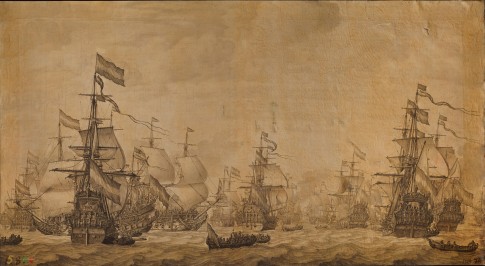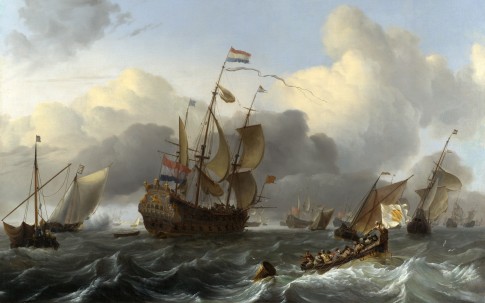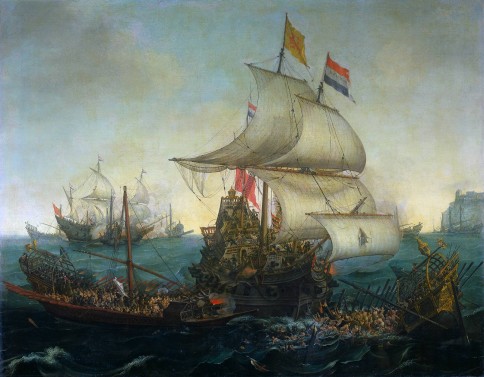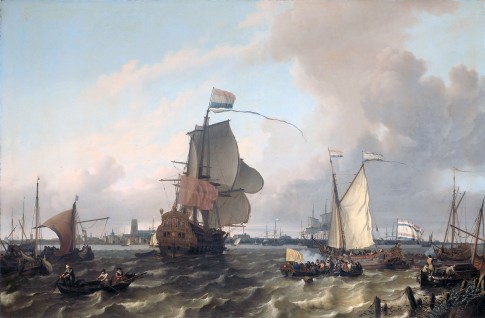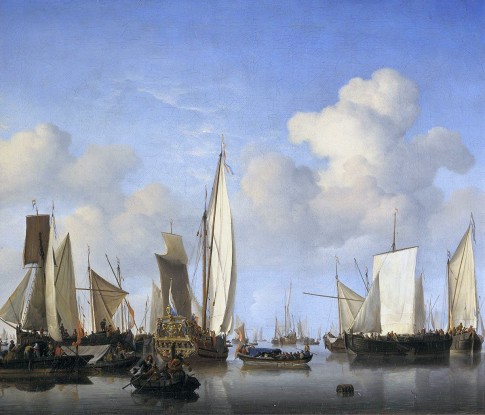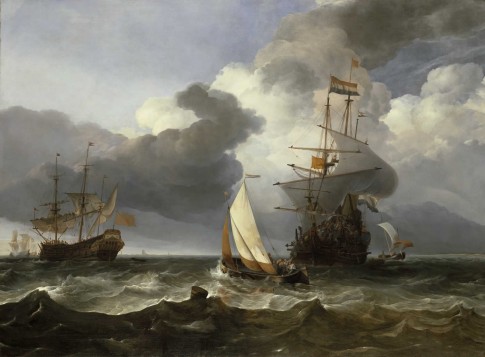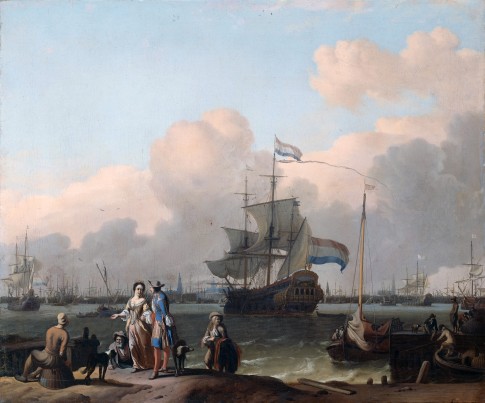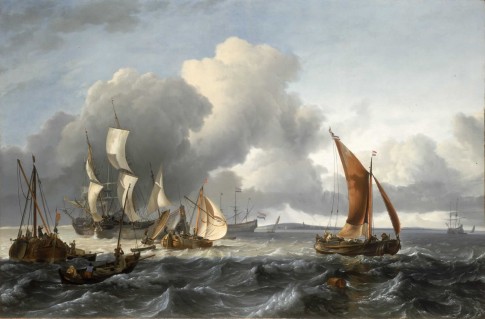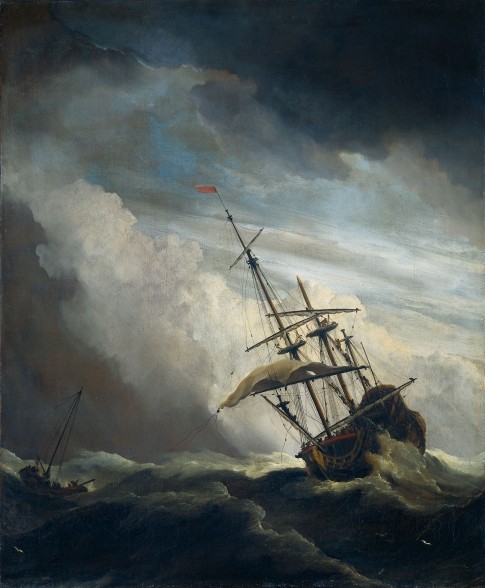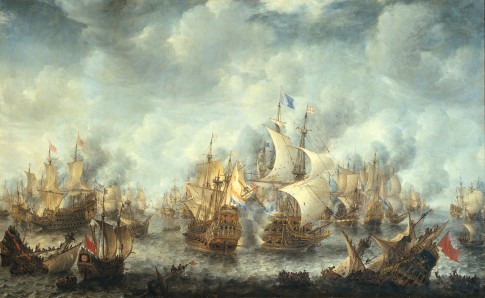
Battle of Scheveningen (Slag bij Ter Heide)
The Battle of Scheveningen (Battle of Ter Heide) was painted by Jan Abrahamsz between 1653 and 1666. The flagship of Admiral Tromp, the Brederode and the Resolution under the flag of Monck can be seen in the middle of this painting.
Rijksmuseum Amsterdam
By the middle of the 17th Century the tensions rose between the Commonwealth of England and the Republic of the Seven Provinces. Political rivalry, religious strife and most of all economic competition had drawn two protestant countries into decades of bloody conflict known as Anglo-Dutch Wars.
In 1650 the Dutch Republic stood proud. After 80 years of the unprecedented struggle for freedom from the all-mighty Spanish Empire the Seven Provinces had finally got their independence formally acknowledged in Westphalia. By this time the former ragtag fleet of the rebellious “sea-beggars” had become the world’s leading maritime power.
As the disputes heightened and diplomats strove to reach a settlement over the commercial issues, the States-General decided to intimidate the English by voting for an increase of the Dutch navy by not less than 150 ships. The effect of this move was quite the opposite to the expected. The English became convinced of the Dutch intentions on war and started preparing themselves to it.
The final trigger was provided by the long-standing English claim to be saluted everywhere in the “British Seas”. The extent of the “British Seas” was never defined, although it is safe to assume that the Channel and the Dover Straits were implied. The Dutch however stood to their own belief of the “freedom of the seas”. Thus the all-important passage of the Dutch trade shipping to the high seas was at stake. The war became inevitable as a result of several flag incidents that led to a bitter confrontation between the naval forces of the two nations.
One of such incidents took place on May 19th 1652 when Tromp and Blake met off Dover and firing broke out over the issue of the salute. Tromp had instructions from the States-General to yield the salute on the understanding that it was a courtesy not an acknowledgment of any legal jurisdiction. In the time of high tensions such orders proved to be fatal. The English were outnumbered and fought a confused action which still brought them two Dutch prizes. The leadership of the Commonwealth was enraged by what they regarded as a treacherous attack and formally declared war on July 8th.
The next twelve months had seen many actions including some of the scale never seen before. So on 2 June 1653 Tromp with 104 ships met Monck and Deane commanding 105 men-of-war. The encounter ended a disaster for the Dutch who lost 20 ships and were routed. The English navy now mounted a blockade of the Dutch waters causing a standstill in trade and a famine for the common people.
The blockade had eventually been lifted after the victualling had collapsed not being able to maintain such an armada 100 miles off its bases. Tromp used this moment to sail out and unite his fleet on 25 July. He was met by Monck and the two fleets fought on July 31st. The English formed a line to use their artillery superiority and passed four times throught the unformed Dutch fleet. Both sides suffered badly, but the losses for the Dutch were worse.
Tromp was killed by a musket ball on the fourth pass. His last words were said to be: ‘I have done, be of brave heart’.
Another depiction of this battle was created by Willem van de Velde the Elder in 1657. He was present at the action and tried to capture the event as he was sailing in a galliot with his son. Subsequently he was heard as a witness in a dispute about the roles of the different commanders.
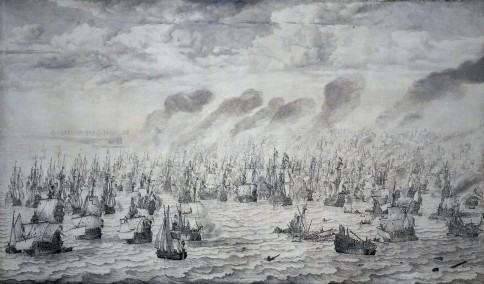
Battle of Ter Heide
By Willem van de Velde, the Elder, 1657
Rijksmuseum Amsterdam
continue reading.....
